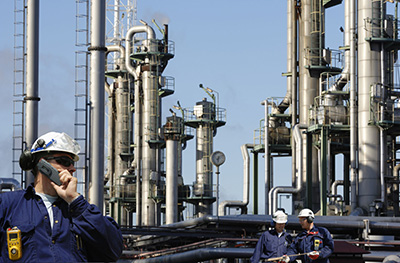Synopsis
The client operates a large petrochemical plant in Thailand’s Rayong province, a few hours to the south of Bangkok. As with all petrochemical plants there are inherent safety issues that must be addressed in order to both prevent accidents and be able to deal with them in the unlikely event that they might occur. The role of the Trilogy Mercury system was to ensure unhindered communications even if the main control room was out of commission either through damage or its proximity to fumes or chemicals. The system accommodates users of a wide array of different communication technologies including handheld radios operating on a number of bands and all types of telephony products. Mercury provides unparalleled flexibility and makes effective communication possible in even the most arduous and hazardous conditions.
The Challenge
The design and layout of petrochemical plants is largely governed by the processes involved. It is usual to have an extremely large site with a multitude of different operational buildings, pipes, storage vessels and facilities. During normal operation many areas of the site will be either unmanned or only lightly manned with a reliance on electronic monitoring. However, in an emergency, communication with people in these areas is essential in containing and coping with a problem.
In normal circumstances all communications flow through the plant’s main control room. However, the nature of the chemicals and processes on site means that small problems can very quickly escalate. In these situations it may be impractical or impossible to continue to access the main control room even if it remains physically undamaged.
The control room is hardwired and therefore has access to a wide array of resources including conventional, SIP and cell phones, UHF, VHF and TETRA radios to name but a few. The challenge is to maintain access to these resources outside of the fixed infrastructure of the main control room. In an emergency situation time is crucial and the consequences of delays in establishing communication paths could be catastrophic.

The Solution
The solution was to build a vehicle mounted control room with enough of the features of the main control room to allow it to take its place in the event of either a disaster or for scheduled maintenance. The vehicle has suitable control equipment to allow for the use of TETRA, UHF and VHF radios, conventional, SIP and cell phones as a minimum. In addition the vehicle is equipped with a Mercury Interface Unit (MIU) fitted with radio (RIB) and telephone (FXS) interface cards which enables all of the audio resources to be used in conjunction with each other.
The system performs the role of a communications hub capable of dealing with everything from the routine communications required for day to day operations to the more demanding communication required to cope with emergencies as and when they arise. With the Mercury system in place not only can the control room speak to people on different technologies but those people can speak to one another regardless of which technology they are using. The importance of this interoperability lies in its ability to connect plant workers, plant managers, the local emergency services, other national emergency and environmental services etc to one another in real-time with full duplex one to one, one to many or conference type calls.
Having this joined up communication capability allows for a proper distribution of resources during an emergency. It minimizes the confusion that occurs with other systems as information and instructions can easily be passed around without the need for a third party to relay the message. In simple terms it allows the full picture to be understood and acted upon as it develops.
Key challenges
- Interoperability – disparate communications devices need to communicate freely
- Real Time Communications – information flow should be without delay regardless of the number of call participants, and without the risk of message passing via a 3rd party
- Reliability – critical applications require robust, proven solutions
Key Features of the Trilogy solution
- Full interoperability between all types and bands of radio, conventional, cell and SIP phones (and almost any other audio device) enables the inclusion of any and all of the critical actors/ participants
- Real-time two way one to one, one to many, or full conference calls are supported
- Mercury is a field proven, COTS product with installations around the globe
Equipment Used
- Mercury Interface Unit with Radio Interface (RIB) and Telephone Expansion (FXS)